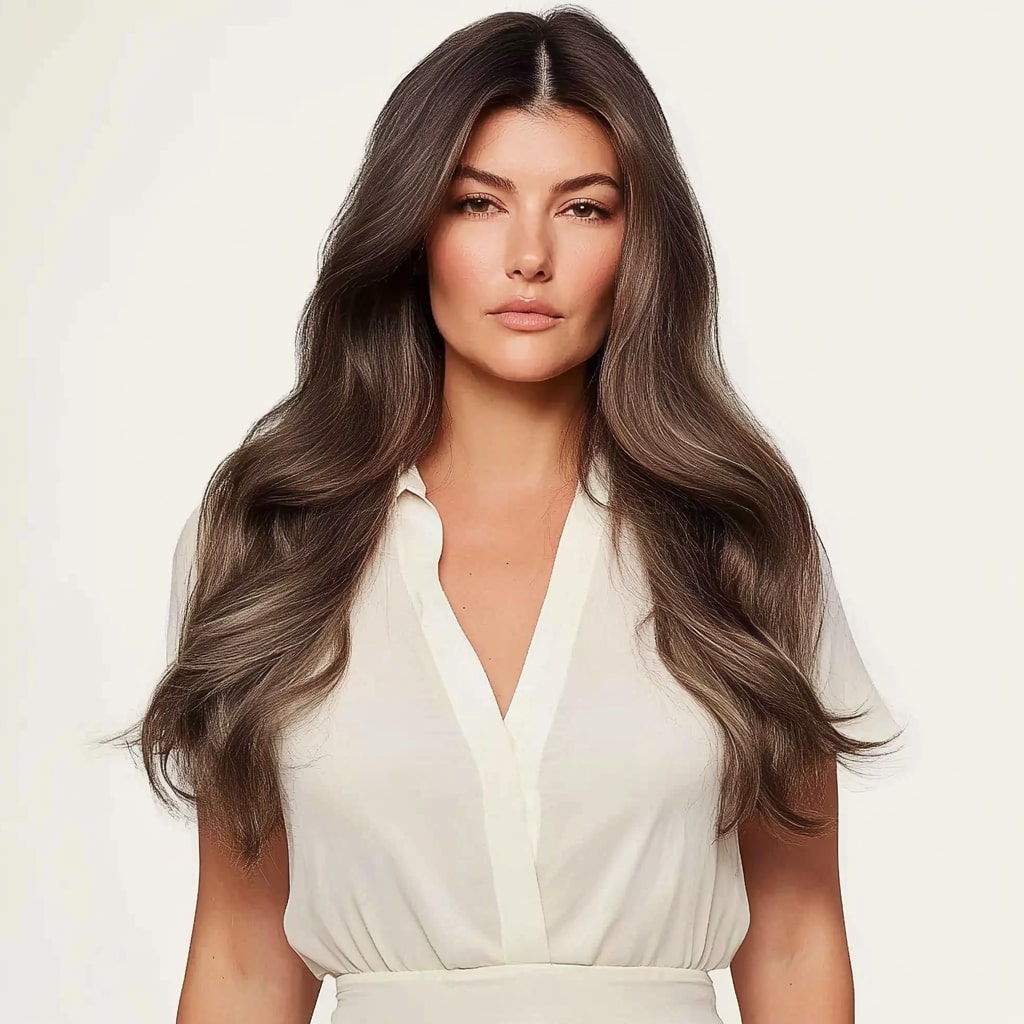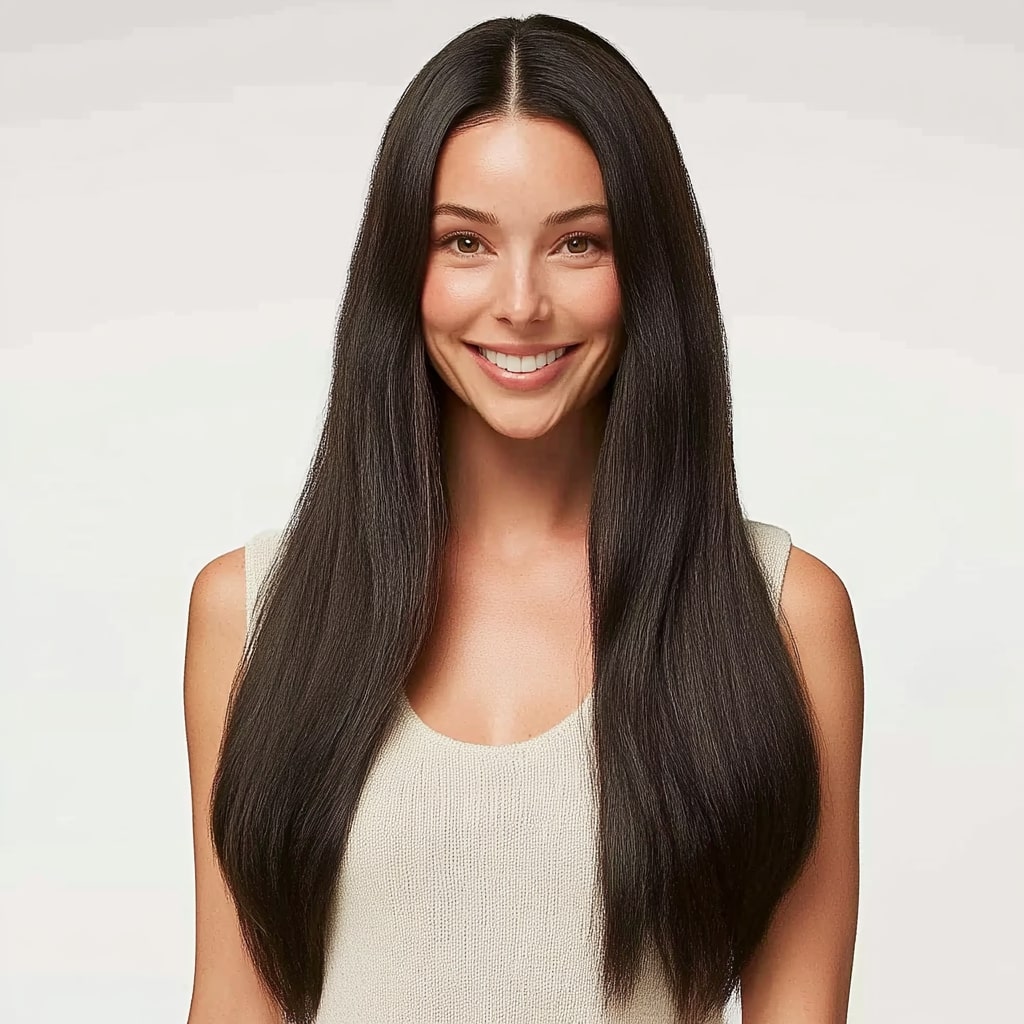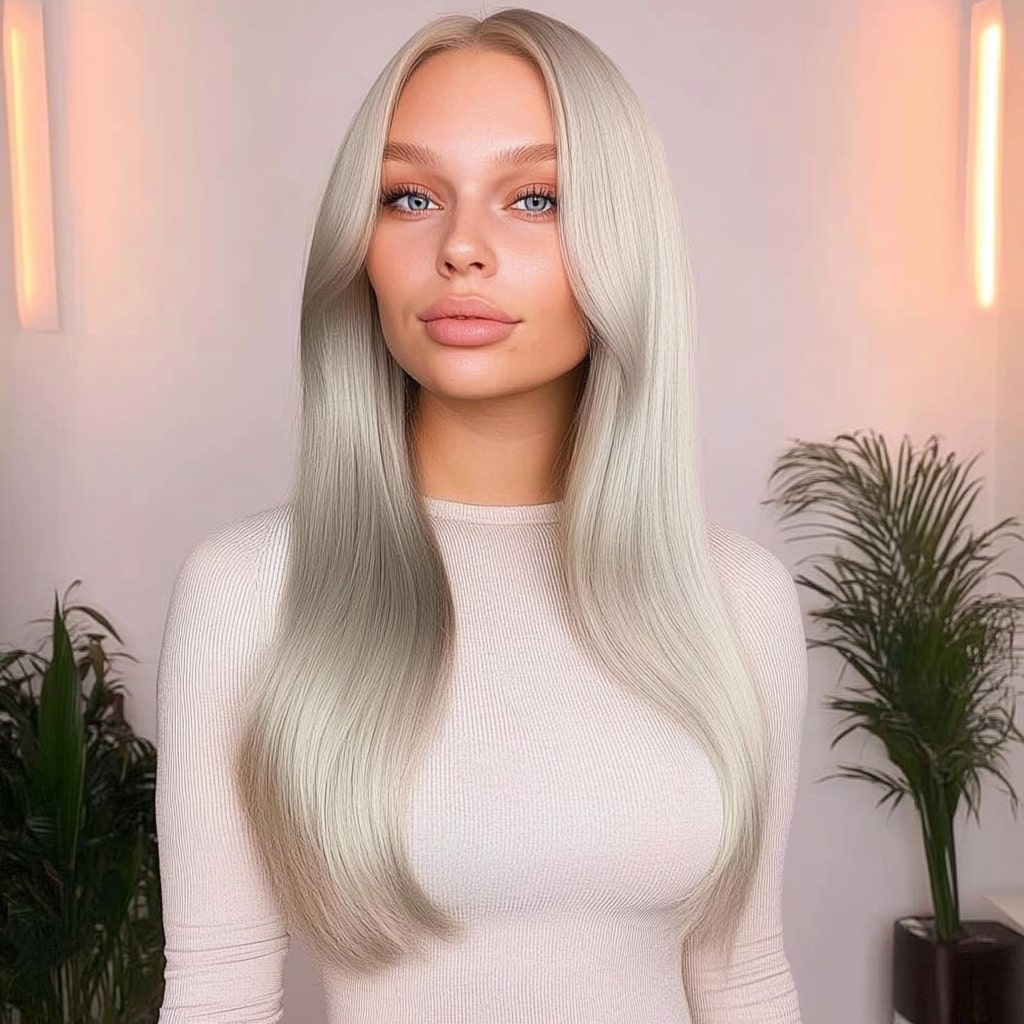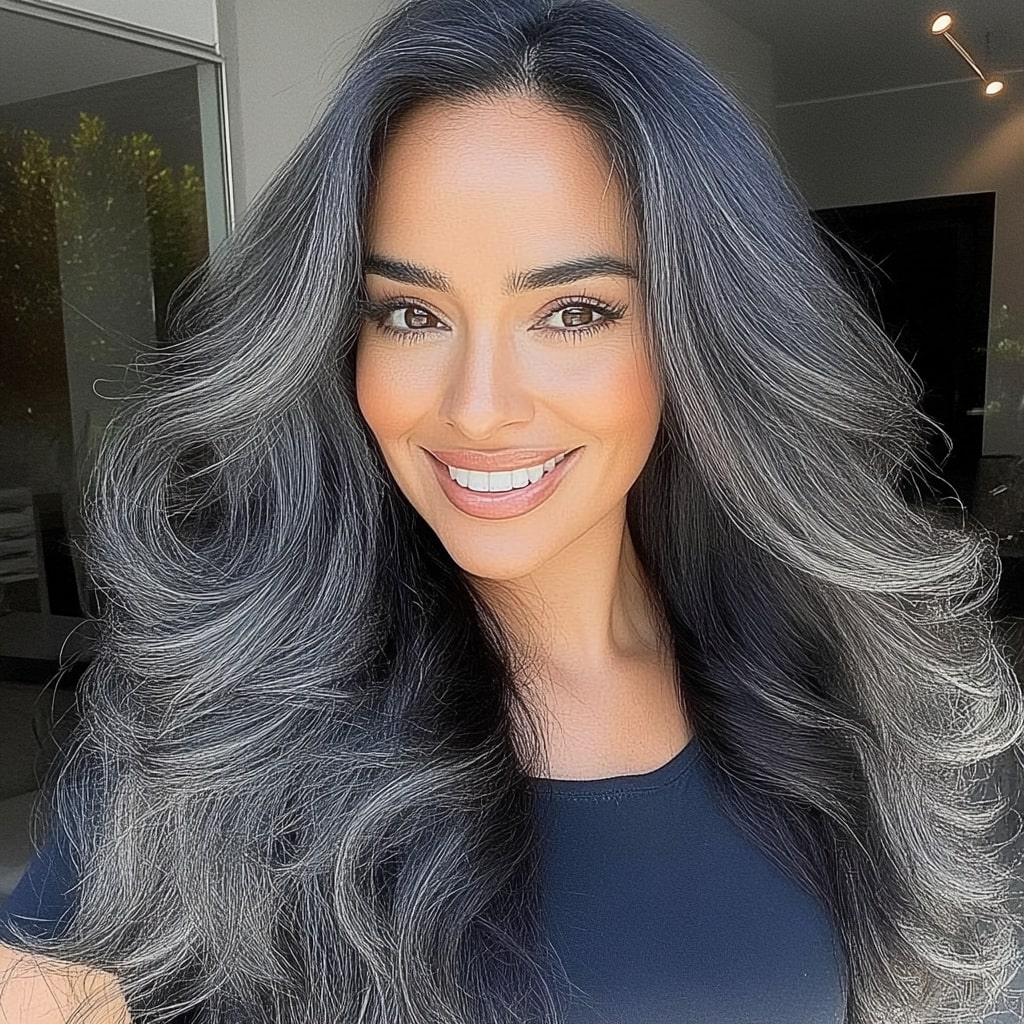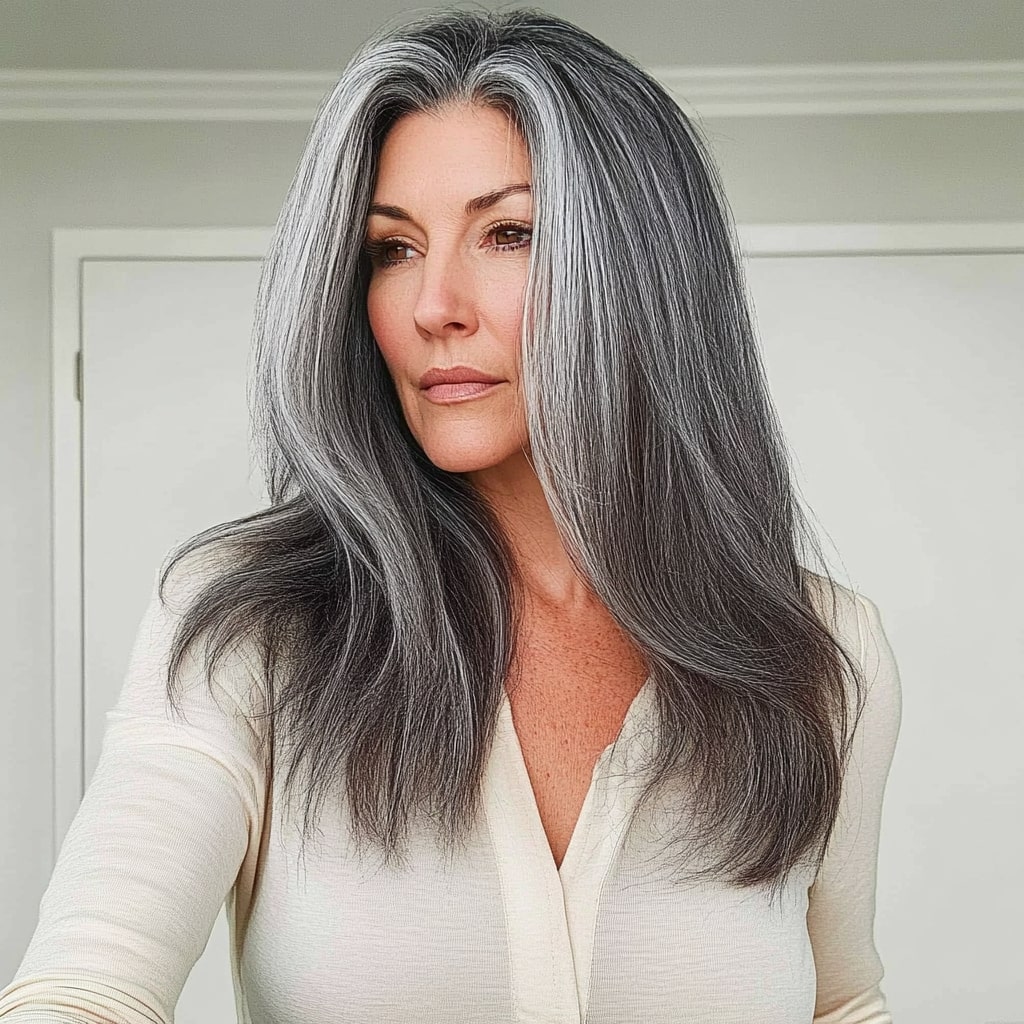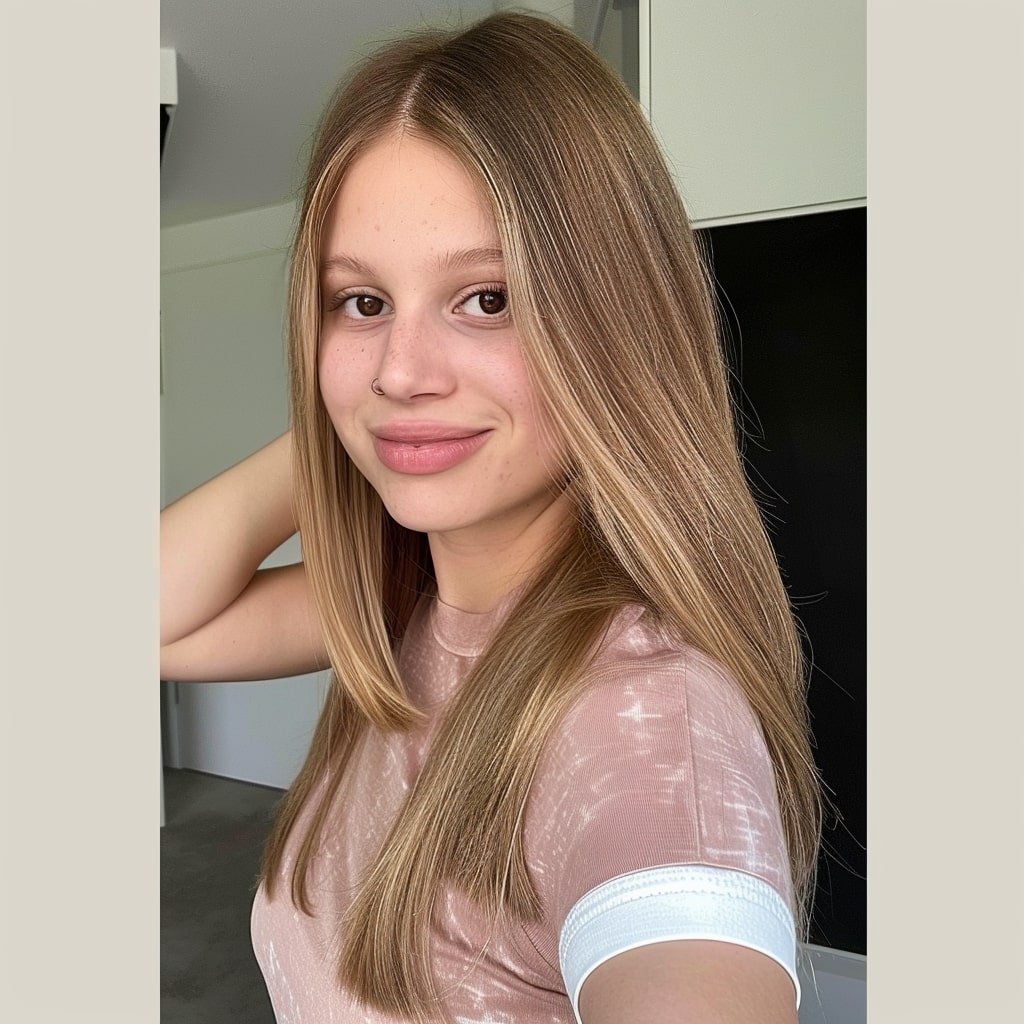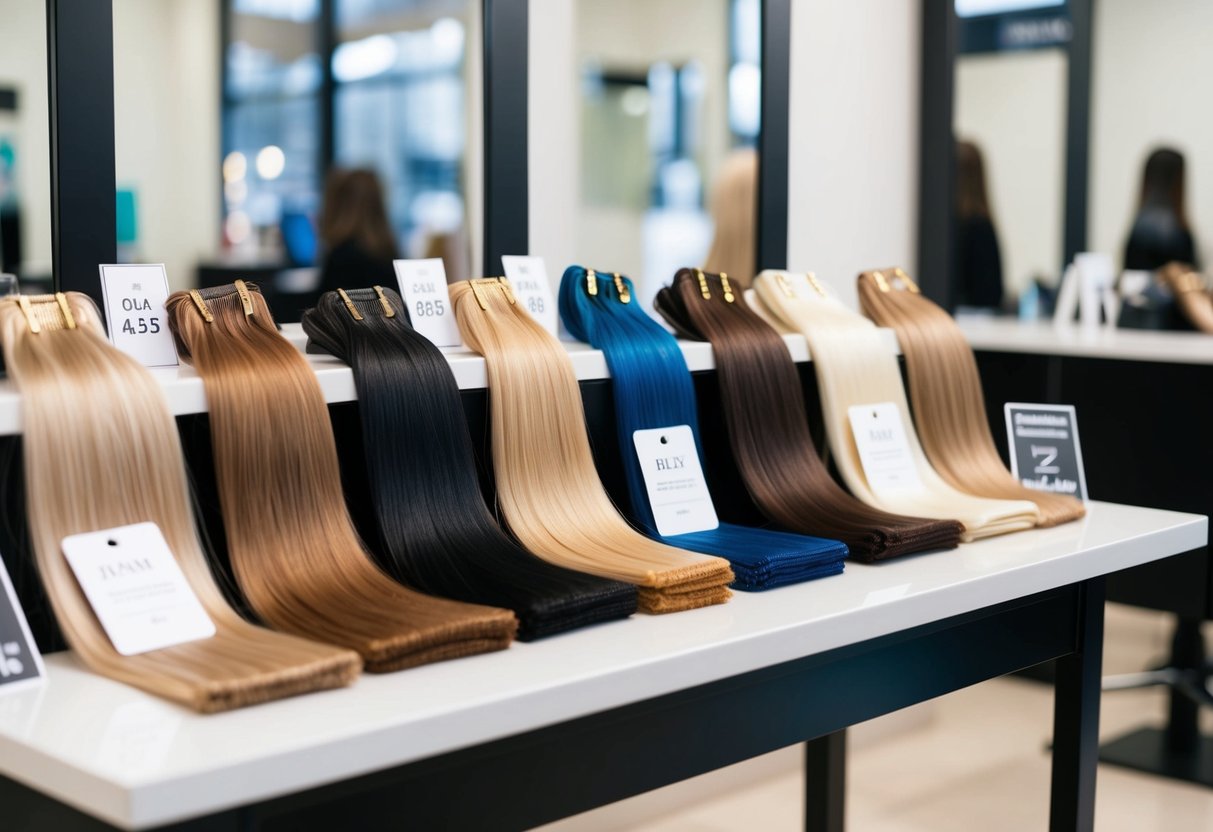Battling the Brass: Causes and Fixes for Orange-Tinted Hair Extensions
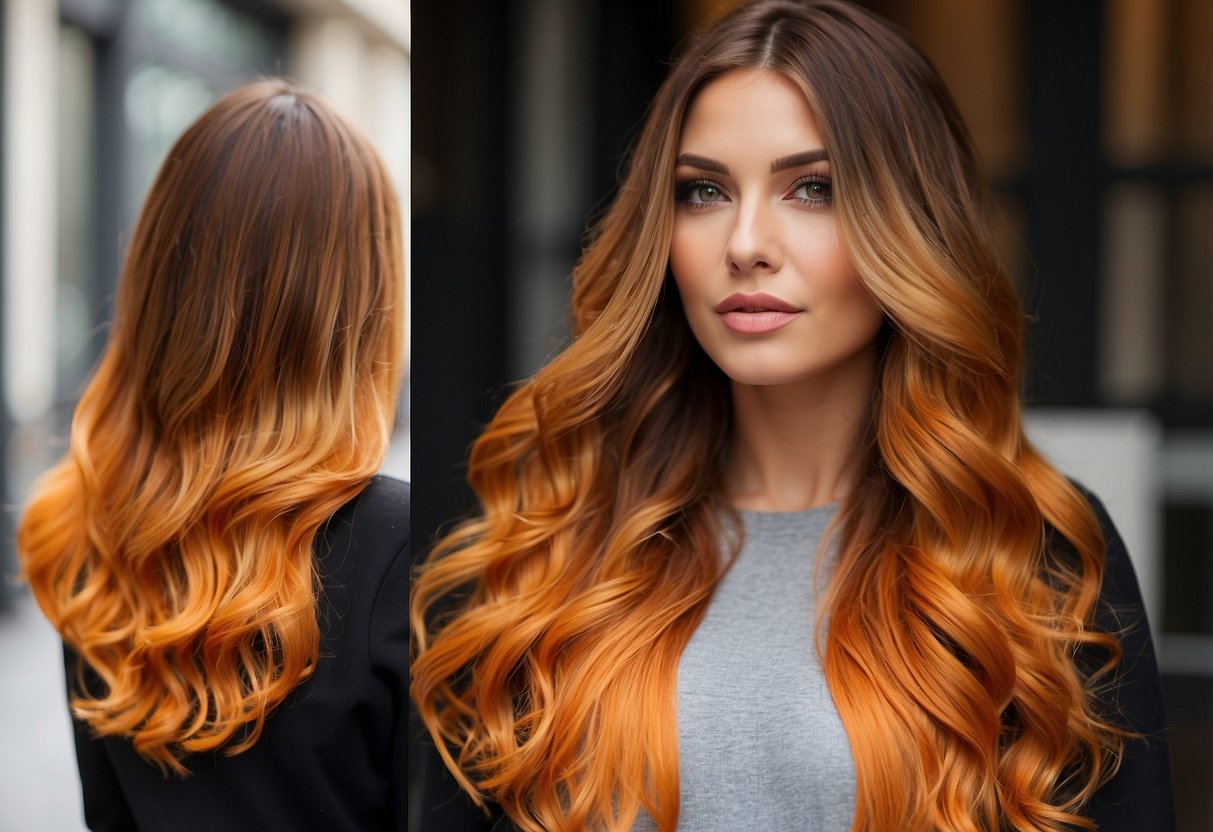
Hair extensions turning orange is because of:
-
Sunlight Exposure:
- Extended time spent in the sun can lead to oxidation, causing your hair extensions to develop an orange or brassy tint.
-
Hard Water Effects:
- Minerals in hard water, such as iron and copper, can build up on the extensions, resulting in an orange discoloration.
-
Excessive Heat Styling:
- Frequent use of heat tools without proper heat protection can damage the extensions, altering their color to an orange shade.
-
Chemical Interaction with Products:
- Certain hair products, especially those with harsh chemicals, can react with the color of the extensions, leading to an orange or brassy tone.
-
Inadequate Dyeing Techniques:
- Incorrect dye application or overly frequent coloring can cause the hair extensions to turn orange over time.
-
Chlorine Exposure:
- Swimming in chlorinated water can chemically alter the hair extensions, leading to a brassy or orange hue.
-
Poor Storage Conditions:
- Storing extensions in direct sunlight or in areas with fluctuating temperatures can cause the color to change, including turning orange.
-
Product Residue:
- A buildup of styling products like gels, sprays, or oils on the extensions can lead to a change in color, potentially resulting in an orange tint.
-
Skipping Purple/Blue Shampoo:
- If you don’t use purple or blue shampoo regularly on blonde or light-colored extensions, brassy tones can develop, turning the hair orange.
-
Inferior Quality Extensions:
- Extensions made from lower-grade materials are more susceptible to color changes, including the tendency to turn orange.
Blonde hair extensions are a fantastic way to add length and volume to your hair, but they can sometimes turn an unwelcome shade of orange. This color change is usually caused by several factors, including chemical reactions and environmental influences. Not knowing why this happens can be frustrating, but understanding the root cause can help you maintain the color and quality of your extensions.
Your hair extensions might be turning orange due to exposure to chlorine, salt water, or even certain sunscreens. These elements can strip away the violet and ash pigments that keep your extensions a cool blonde color. Using heat styling tools and washing the extensions too frequently can also cause the color to shift.
To keep your hair extensions looking fresh and blonde, it is essential to follow proper care and maintenance practices. Rinsing your hair after swimming, using hair-safe products, and reducing heat styling can minimize the risk of unwanted color changes.
Key Takeaways
- Chemical reactions and environmental factors can cause extensions to turn orange.
- Avoiding exposure to chlorine and salt water helps maintain color.
- Proper care and maintenance are crucial for preserving your hair extensions.
Understanding Hair Extension Discoloration
Hair extensions can develop orange tones due to a combination of chemical reactions and environmental factors. Recognizing these causes is key to maintaining the desired color of your extensions.
The Science Behind Color Changes in Hair Extensions
Hair extensions often start as dark natural hair. They undergo a chemical process to remove the dark pigments, using treatments to achieve lighter shades like blonde. During this process, the hair’s cuticle layer is stripped, leaving it vulnerable to color changes.
Underlying pigments: The natural red and yellow pigments in the hair can become exposed when the darker colors are removed. This is because some color treatments do not fully neutralize these pigments, leading to a coppery or orange hue over time.
Factors That Cause Orange Tones in Hair Extensions
Chlorine: Exposure to chlorinated water, such as in swimming pools, can react with your extensions, stripping away the violet tones used to counteract brassiness. This makes the orange and red pigments more visible.
Hard Water: Minerals in hard water can deposit on the hair, affecting its color. These minerals often react with the pigments in the hair, causing discoloration.
Sun Exposure: Ultraviolet rays from the sun can also break down the pigments in hair extensions, leading to fading and the emergence of unwanted orange tones.
Improper product use: Using shampoos or conditioners that are not sulfate-free can strip the hair, accelerating color changes. Always opt for products designed for color-treated hair.
External Factors Influencing Discoloration

Several external factors can cause discoloration of hair extensions, including sun exposure, contact with chlorine and salt water, and reactions with specific hair care ingredients. Each of these factors can degrade the color of hair extensions, leading to unwanted changes.
Effects of Sun Exposure and UV Rays
Sun exposure and UV rays can affect the color of hair extensions. UV rays break down the color molecules in the hair, causing it to fade or turn brassy. Prolonged sun exposure can strip away the color, making it look dull and lifeless. To protect your hair extensions, use products containing UV filters and cover your hair when spending time in the sun.
Impact of Chlorine and Salt Water
Chlorine from swimming pools and salt water from the ocean are harmful to hair extensions. Chlorine can strip away the protective coatings on the hair, leading to dryness and discoloration. Salt water adds to this by removing moisture and causing brittle hair. After swimming, rinse your hair thoroughly with fresh water to remove chlorine and salt, then use a sulfate-free shampoo and conditioner.
Reactions With Hair Care Ingredients
Certain hair care ingredients can also cause discoloration. Ingredients like avobenzone, often found in sunscreens, and minerals from hard water can interact with the hair, leading to an orange or pink tint. Avoid products with harsh chemicals and opt for a water filter if you live in an area with hard water. Using gentle, sulfate-free products helps maintain the integrity of your hair extensions.
Hair Care Practices Leading to Color Changes
Proper care is essential to maintain the color and integrity of your hair extensions. Several factors can cause hair extensions to turn orange, including the products you use, how you store them, and your styling habits.
The Role of Shampoo and Toning Products
Shampoos and toners are crucial in maintaining the color of hair extensions. Using a purple shampoo can help counteract brassy tones in blonde extensions by neutralizing unwanted orange hues. Purple shampoos contain violet pigments that cancel out yellow and orange tones in the hair. However, overuse can cause a purple tint, so it’s important to follow the instructions carefully.
In addition, regular shampoos with sulfates can strip color from hair extensions faster. Opt for sulfate-free shampoos to preserve the color longer. Toners can also be effective. They balance the color by adding cool pigments to the hair, preventing a shift to warmer, brassy tones.
Consequences of Improper Hair Extension Storage
How you store your hair extensions can impact their color and condition. Store them in a cool, dry place away from direct sunlight, which can cause fading and discoloration. Exposure to moisture can also lead to mold and damage, affecting the integrity and color of the extensions.
It’s best to store hair extensions in a breathable bag, such as a silk or satin pouch. This material reduces friction, which can cause frizz and breakage. Ensuring they are clean and fully dry before storage is vital to prevent any bacterial growth that could also contribute to color changes.
The Effect of Heat and Styling Tools
Heat styling tools like flat irons, curling wands, and blow dryers can affect the color of your hair extensions. High temperatures can cause the color to fade or change, making blonde extensions appear more orange. To protect your extensions, always use a heat protectant spray before applying heat.
Lower the heat settings on your styling tools to avoid excessive heat exposure. Regular use of heated tools at high temperatures can also damage the hair's cuticle, making it more susceptible to color changes and dryness. Limit the use of heat styling to maintain both the color and overall health of your hair extensions.
Chemical and Physical Properties of Hair Extensions

Human hair extensions have unique chemical and physical properties due to their origin, treatments, and natural pigments. Understanding these factors helps explain why extensions may turn brassy or orange over time.
Understanding Hair Extension Structure
Hair extensions often use human hair, which has a multi-layered structure. The outermost layer, called the hair cuticle, protects inner layers and influences shine and strength.
When the cuticle is intact, extensions look healthy and are less likely to tangle. However, damage to the cuticle can lead to discoloration and brittleness.
Manufacturers sometimes coat hair extensions with silicone for a smoother appearance. This coating washes off over time, exposing the natural or chemically treated state of the hair.
Influence of Chemical Treatments on Color
Hair extensions often undergo chemical treatments to achieve the desired color. Extensions derived from darker hair need bleaching to remove natural pigments before being dyed.
Bleaching strips off natural red, ash, and violet pigments, creating a porous hair strand. This porosity makes hair more susceptible to chemical reactions with elements like chlorine, salt water, and even certain types of sunscreen.
Moreover, without the protective cuticle, these chemically treated hairs can react to minerals in water, causing a brassy or orange hue over time.
Natural Pigments and Coloration
Human hair contains several natural pigments that influence its color. Eumelanin produces black or brown hues, while pheomelanin results in red or blonde colors.
Extensions with a natural red pigment are more prone to turning orange or brassy because red tones are more sensitive to environmental factors. Hair that has been bleached to remove these pigments becomes more susceptible to discoloration.
The lack of natural protective pigments, combined with environmental factors, can exacerbate color changes in hair extensions, leading to undesired orange tones.
Preventative Measures and Maintenance
To keep your hair extensions looking their best, it's crucial to understand the right care routines and choose the appropriate products. By taking proper care and using the right items, you can avoid the common problem of extensions turning orange.
Proper Hair Extension Care Routines
Firstly, limit how often you wash your extensions. Washing them once every 2-3 weeks is usually enough. Overwashing can strip away essential moisture and nutrients, leading to dryness and discoloration.
Always rinse your extensions thoroughly after swimming in pools or the sea. Chlorine and saltwater can cause color changes. Using a swim cap provides an additional layer of protection from these elements.
Avoid using heat styling tools frequently. Heat can damage the hair cuticles, contributing to color fading and unwanted tones. If heat styling is inevitable, apply a heat protectant spray to minimize damage.
Choosing the Right Products for Hair Extensions
Opt for a sulfate-free shampoo and conditioner. Sulfates can be harsh and strip away color and natural oils. When you do wash your extensions, use a clarifying shampoo occasionally to remove any build-up that can dull the hair.
Using a conditioning mask regularly helps maintain moisture and elasticity. This keeps the hair healthy and reduces the risk of color changes.
For toning, use a purple or blue shampoo. These toning products can neutralize brassiness by counteracting orange hues.
Apply hair-safe sunscreen when exposed to the sun for extended periods. UV rays can alter hair color, so sunscreen adds essential protection.
Proper product selection and consistent maintenance will significantly enhance the longevity and appearance of your hair extensions.
Corrective Actions for Orange Tones
To address the orange tones in hair extensions, consider using toners and color correctors, along with specific treatment options to restore the desired color. Proper maintenance and the right products can significantly improve the appearance of your extensions.
Using Toners and Color Correctors
To counteract orange or brassy tones in hair extensions, toners and color correctors are essential. Blue and purple toners work well to neutralize unwanted warm tones. Purple shampoo is recommended for yellow undertones, while blue shampoo is more effective for orange hues typically found in brunette hair.
When choosing a toner, look for products labeled as "ashy" or "cool"; these contain pigments that help counteract warmth. Applying a dark ash or cool blonde demi-permanent color can also help cover the orange tones. Be sure to follow the instructions carefully to avoid overprocessing, which can damage the hair.
Treatment Options for Color Restoration
Malibu C Hard Water Treatments can help remove mineral buildup that contributes to discolored hair extensions. These treatments are especially useful if hard water has exacerbated the orange tint. Additionally, consider using a mild shampoo and conditioner to maintain the health of your extensions.
For more intense discoloration, you may need to re-bleach the extensions or use a color-correcting treatment specifically designed to target orange tones. Make sure to use a low-volume developer to minimize damage. Avoid frequent washing and excessive heat styling, as these can strip the color and cause further orange tones.
By using the right products and treatments, you can effectively restore your hair extensions to their desired shade and maintain their appearance.
Long-Term Strategies for Hair Extension Care

To maintain your hair extensions, focus on color preservation and protection techniques. These steps help prevent issues like brassiness and dryness.
Lifestyle Adjustments for Color Preservation
One key strategy to keep your extensions vibrant is adjusting your lifestyle. Avoid activities that can cause discoloration. For instance, swimming pool water contains chlorine, which can make your extensions turn orange or brassy.
Use a swim cap if you swim often. If you use sunscreen, ensure it's oil-free to prevent residue buildup that can stain the extensions.
Shower water may also contribute to brassiness. Use a shower filter to balance minerals and reduce this risk. Additionally, you might want to avoid frequent use of heat styling, which can lighten and damage the hair extensions over time.
Advanced Treatment and Protection Techniques
For extra protection, consider using specialized treatments. Hair masks nourish and hydrate both your natural hair and extensions. Look for masks that address brassiness and prevent the orange tint.
Additionally, regular use of a quality hair dye can keep the color fresh. Touching up with lowlights or highlights might also help maintain a natural look.
Invest in products designed to protect hair from environmental damage. These products act as a barrier against harmful factors like UV rays and pollutants. They can also help in maintaining the vibrant color of your extensions.
Deep conditioning treatments can help in combating dryness and keeping the extensions in optimum condition. This is essential, especially if you're exposed to dehydrating agents regularly.
Frequently Asked Questions
There are various reasons why hair extensions might turn orange. Addressing discoloration and taking preventive measures can help maintain their original color.
How can the discoloration of hair extensions be corrected?
To correct discoloration, you can use a violet or blue shampoo designed to neutralize orange tones. Additionally, professional toning treatments can help restore the desired shade.
What steps help prevent hair extensions from changing to an orange hue?
Before swimming, wet your hair with fresh water and apply a generous amount of conditioner. Braiding your hair can further protect it from chlorine and saltwater. Using a sulfate-free shampoo and conditioner also helps maintain the color.
What are the underlying reasons for hair extensions turning orange?
Hair extensions can turn orange due to exposure to chlorine, saltwater, and hard water. These elements strip away the violet or ash pigments, revealing the warm base tones of the hair. Poor-quality hair extensions may also discolor due to inadequate dyeing processes.
In what way does exposure to the sun lead to the alteration of hair extension color?
Sun exposure can lead to discoloration by breaking down the chemical bonds in the hair dye. UV rays act as a bleaching agent, removing the cool pigments and exposing the warmer tones underneath.
How does one address the issue of hair extensions obtaining an orange tint while on vacation?
If your hair extensions turn orange while on vacation, use a temporary toning shampoo with violet or blue pigments. After swimming, rinse your hair thoroughly and follow up with a deep conditioning treatment to maintain moisture.
What are effective methods to remove the orange tint from hair extensions?
Effective methods include using a violet or blue toning shampoo and visiting a professional colorist for a toning treatment. Regularly applying a sulfate-free, color-safe conditioner can also help in keeping the orange hue at bay.

 My Store Credit
My Store Credit
 Buy Again
Buy Again
